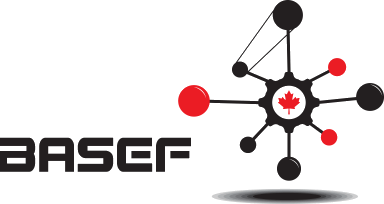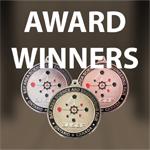Projects are grouped into levels, based on the grade you’re in, and divisions, based on the subject area of your project.
Levels
Students compete for merit awards with others in their own level. Judging for trip awards and best in division is across levels.
Note that students working in pairs must both be in the same level.
The three levels are:
- Junior Level – Grades 7 and 8
-
Intermediate Level – Grades 9 and 10
-
Senior Level – Grades 11 and 12
Divisions
Projects are entered in one of the following six (6) divisions. If you are unsure of the division for your project either choose the nearest fit or contact the Chief Judge . Note that the Chief Judge may recommend a change of division to allow for the fairest adjudication of the students’ work.
Life Science
A Life Science project examines some aspect of the life or lifestyle of a non-human organism.
Life Science projects include botany and zoology, as well as psychology and kinesiology of non-human organisms. Examining plant growth or animal behaviour are examples of Life Sciences. Some phenomena, such as digestion, involve both Life Science and Physical Science.
To determine the best placement, consider whether your intent was to study the chemistry of the process, or the role of the process in the life of the animal (eating, production of enzymes, handling of waste, etc.) Does the exhibitor’s view of the problem extend to include the organism?
Biotechnology
Biotechnology is the application of knowledge of biological systems to solve a problem, create a product or provide a service. Biotechnology projects will fall into one of three subject fields:
- crop development,
- animal science, and
- microbials.
Crop development is interested in not just plants, but in plants which are involved in an agricultural, horticultural or silvicultural (forestry) production.
Projects in this area may investigate problems of herbicide tolerance, spacing, cultivation, irrigation, effect of soil variation, hybridization, etc.
Animal science projects pertain to animals involved in agriculture and aquaculture, those domesticated as pets, or for sport, as well as projects where humans are participating in wild animals’ lives, perhaps through habitat revitalization, population management, or harvesting.
All projects involving animals demand careful planning with respect to YSF Canada Regulations. Study-type projects should be considered by pupils with an interest in animal science. Possible topics include enhancement of animal production, reproductive technologies, genetics and transgenics, animal health, housing, training and interactions.
Microbial projects consider how microbials are affecting productivity in agriculture, horticulture and forestry. Possible topics include plant growth-promoting rhizobacteria, biological weed and fungal control, bio-fuel cells, etc.
Projects which focus on the acquisition of knowledge about how something lives should be categorized as Life Science, not Biotechnology. The distinction is similar to that between Physical Science projects and Engineering projects. In both cases projects in the latter division deal with an application of knowledge to solve a problem. Often the discriminating factor is in the student’s conceptualization of the project. There will be situations where the choice is not clear.
Health Sciences
A Health Sciences project examines biomedical and/or clinical aspects of human life or lifestyle and its translation into improved health for humans, or more effective health services and products.
Projects related to the health of specific populations, societal and cultural dimensions of health, and environmental influences on health are also included in this division.
Health sciences projects may include those related to aging, genetics, cancer research, musculoskeletal health, arthritis, circulatory and respiratory health, nutrition, neurosciences, mental health, psychology, metabolism, human development, infection and immunology.
Projects involving animal research that have a direct application to humans are included in this division.
Physical and Mathematical Sciences
A Physical and Mathematical Sciences project studies abiotic phenomenon to understand the relation between identified factors, perhaps including a cause and effect relationship, or the use of mathematical models or mathematics to solve theoretical problems.
Physical Science projects study the relationship of factors in fields such as physics, chemistry, astronomy, geology, oceanography, mathematics and meteorology.
Some projects entered as physical science may be more accurately entered as engineering. For example, experimenting to find “Which Materials Absorb Oil Best?” is only physical science, although there is an implied application in the work, such that it is almost “Which Materials Can Absorb Oil From an Oil Spill?”.
Determining the exhibitors intent should help clarify. Comparison testing of products, as it is descriptive, would be included. Mathematical science projects seek to demonstrate applications of mathematics (i.e. the search for a mathematical model) or to solve a theoretical problem.
For example, in attempting to predict the shape of cacti, the use of mathematics would be central to the project. The problem provides a context for the exploration of pattern and the search for a mathematical model. Some areas of investigation in this category include algorithms, operational research (applications of mathematical and computing science to solve planning or operational problems), and statistics.
Engineering and Computing Sciences
A Engineering and Computing Sciences project applies physical science knowledge to solve a problem or achieve a purpose, or deals with computing or an innovative software or hardware design.
Engineering projects investigate the utility of innovations and inventions. Although a complete engineering project will include an outline of the need, the development of the innovation and some work on introducing the innovation to the community, many projects focus on just the development phase.
Engineering projects can focus on a new process, or a new product. A study of Bernoulli’s principle would be Physical Science, while the application of such a principle to aerodynamics and wing design, would be Engineering.
Computing science projects are applied science and technology projects that concentrate primarily on the development of computer equipment or programs. They focus on computers, their languages, their software, databases and their function. Projects using computers to store and handle data are normally entered in the division suggested by the nature of the data. However, if the project is more focused on technique using the computer to accomplish this task and the data are of secondary significance, the project should be entered in this division.
Earth and Environmental Sciences
An Earth and Environmental Sciences project has as its focus either a topic relating to planetary processes or the relationships of organisms to those processes, or between or among organisms.
Projects in this division can include the pursuit of knowledge in any of the following scientific disciplines:
- Geology, Mineralogy,
- Physiography,
- Oceanography,
- Limnology,
- Climatology,
- Seismology,
- Geography and Ecology.
Earth and Environmental science involves the study of pollution (air, water and land), its sources and control. It can also involve studies of biotic and/or abiotic factors in an environment where such studies enhance our understanding of biological relationships and abiotic cycles.
Studies dealing with resource management or sustainable development would fall into this category. Examples of such studies might include capture/recapture studies for estimation of population densities, determination of bioproductivity in a specific ecosystem or niche, studies of plate tectonics and examination of mineral cycles (e.g. salt mills in the oceans).




